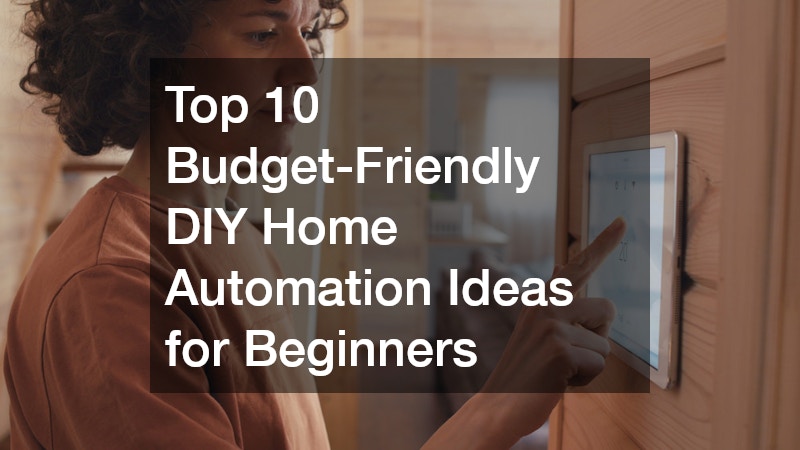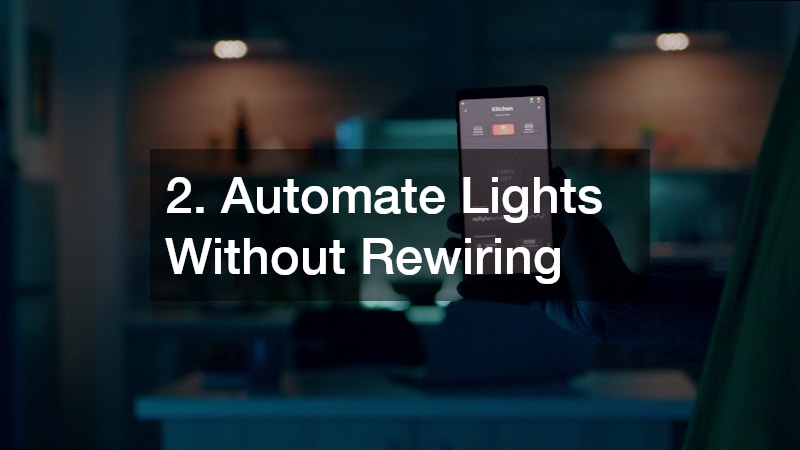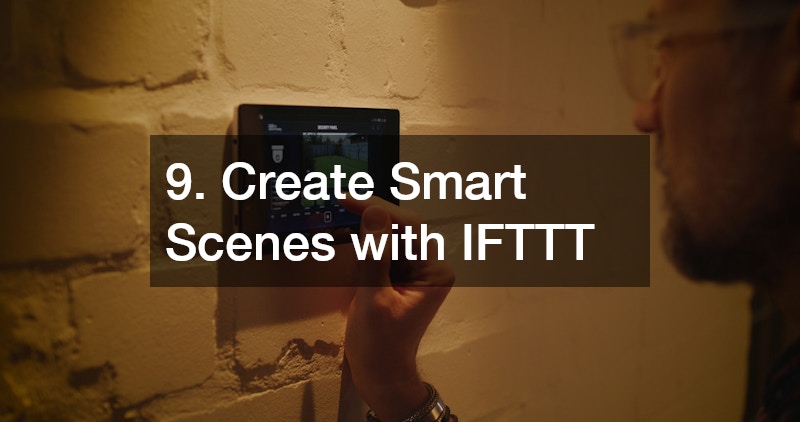
Smart homes aren’t just for tech experts or people with big budgets. Thanks to affordable technology and easy-to-install devices, homeowners can now enjoy the convenience and efficiency of home automation without hiring a professional. If you’re new to the concept, DIY home automation involves setting up smart gadgets yourself to control aspects like lighting, security, and climate through your phone or voice assistant.
In this guide, we’ll walk you through 10 budget-friendly DIY home automation ideas perfect for beginners. These ideas are practical, low-cost, and don’t require technical expertise. Whether you’re looking to boost security, cut energy costs, or simply enjoy the convenience of smart living, there’s something here for you.
1. Why Start with Smart Plugs?
Smart plugs are one of the easiest and most affordable ways to automate your home. Simply plug them into your wall outlet and connect them to your Wi-Fi. You can then control lamps, coffee makers, or fans through your smartphone or a voice assistant.
Benefits:
- No tools or rewiring needed
- Easily scheduled to turn appliances on/off
- Helps reduce energy consumption
2. Automate Lights Without Rewiring
Instead of installing smart bulbs in every room, start with just a few in key areas like your bedroom or living room. Smart LED bulbs allow you to adjust brightness and color, and you can automate schedules for waking up or winding down.
Pro Tips:
- Look for energy-efficient models with app control
- Group multiple bulbs in one room for synchronized control
- Compatible with Alexa, Google Assistant, and Siri
3. Get Started with Smart Thermostats
If you’re looking to save money on your energy bills, a DIY smart thermostat is a great place to start. These devices learn your habits and adjust temperatures accordingly, optimizing energy use.
Beginner Tip:
Choose a thermostat that comes with an easy installation kit and a user-friendly app. Some models are designed specifically for DIYers and include step-by-step setup instructions.
4. Set Up a Basic DIY Security Camera System
Keeping your home safe doesn’t have to cost a fortune. Several budget-friendly indoor/outdoor security cameras are now available with motion detection, night vision, and cloud storage options.
Features to look for:
- Easy app integration
- Two-way audio
- Battery or solar-powered options
5. Install a Smart Doorbell
Smart doorbells are another excellent DIY home automation idea. These devices alert you when someone is at your door and allow you to speak with visitors through your phone, even when you’re not home.
Installation Tips:
- Wireless models are easier to install
- Ensure your Wi-Fi signal is strong near the front door
- Choose one with motion-triggered video recording
6. Use Motion Sensors for Lights and Alerts
Motion sensors can be installed around the house to control lighting or send alerts when movement is detected. These are ideal for hallways, porches, or areas like garages where you might forget to turn the lights off.
Quick Setup Tips:
- Battery-powered sensors offer flexible placement
- Combine with smart bulbs for automatic lighting
- Many work with your existing smart hub
7. Try Voice-Controlled Automation with Smart Assistants
One of the easiest DIY home automation tools for beginners is using a voice assistant like Alexa or Google Home. Once set up, you can control most smart devices just by speaking commands.
Setup Suggestions:
- Start with a smart speaker or display
- Connect lights, plugs, and thermostats to it
- Create routines like “Good Morning” to automate multiple tasks
8. Automate Curtains or Blinds
Automated curtain motors are now widely available and easy to install. These devices can open or close your blinds based on sunlight or a set schedule, improving both comfort and energy efficiency.
Why it’s worth it:
- Reduces sun damage to furniture
- Improves insulation
- Adds a touch of luxury without the high price tag
9. Create Smart Scenes with IFTTT
IFTTT (If This Then That) is a free platform that allows you to connect different devices and apps. For example, you can set your lights to turn off when you leave home or receive a text if your security camera detects motion.
Beginner Examples:
- Sync weather updates to trigger HVAC settings
- Automatically log security alerts to your email
- Link the smart doorbell activity to phone notifications
10. Monitor Energy Usage with Smart Power Strips
Smart power strips allow you to control multiple devices and track their energy consumption. They’re ideal for entertainment centers or home offices where several electronics are used together.
Benefits for DIYers:
- Helps identify power-hungry devices
- Surge protection included
- Remotely turn off groups of devices to save electricity
How These Fit into Easy DIY Projects for Home
All of the automation tips listed above fall into the category of easy DIY projects for home improvement. You don’t need professional tools or skills—just a bit of time and curiosity. Each project can be completed over a weekend and upgraded later as your home automation system evolves. DIY home automation not only adds value to your home but also enhances your everyday life.
Final Thoughts
Home automation doesn’t have to be expensive or complex. These budget-friendly DIY ideas give you a head start in transforming your home into a smart space without professional help. From controlling your lighting to securing your home and managing energy usage, automation is now within everyone’s reach.
Start small, experiment, and enjoy the convenience of a smarter home, one device at a time.


